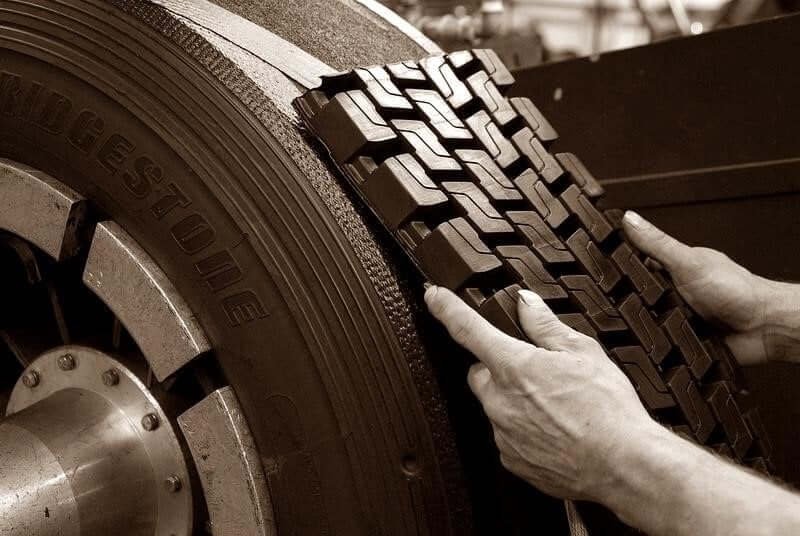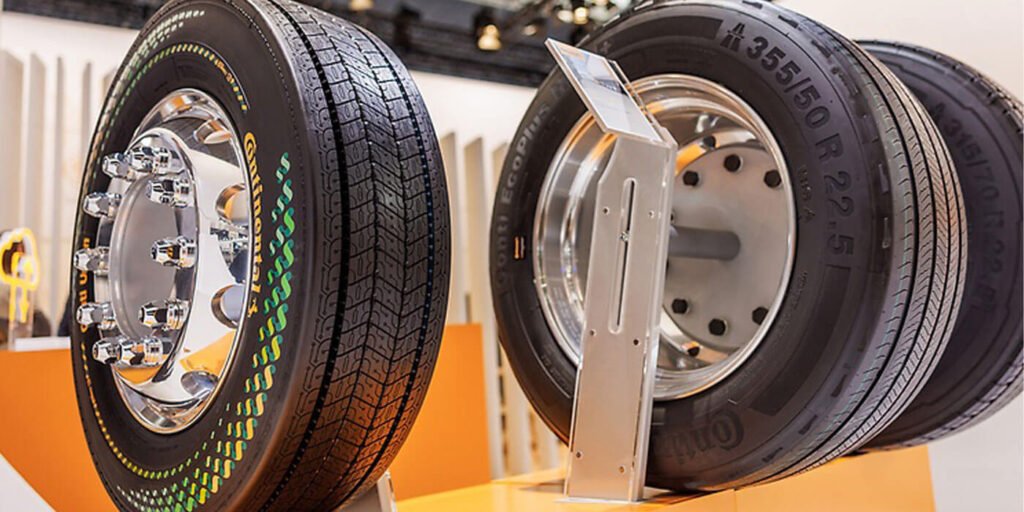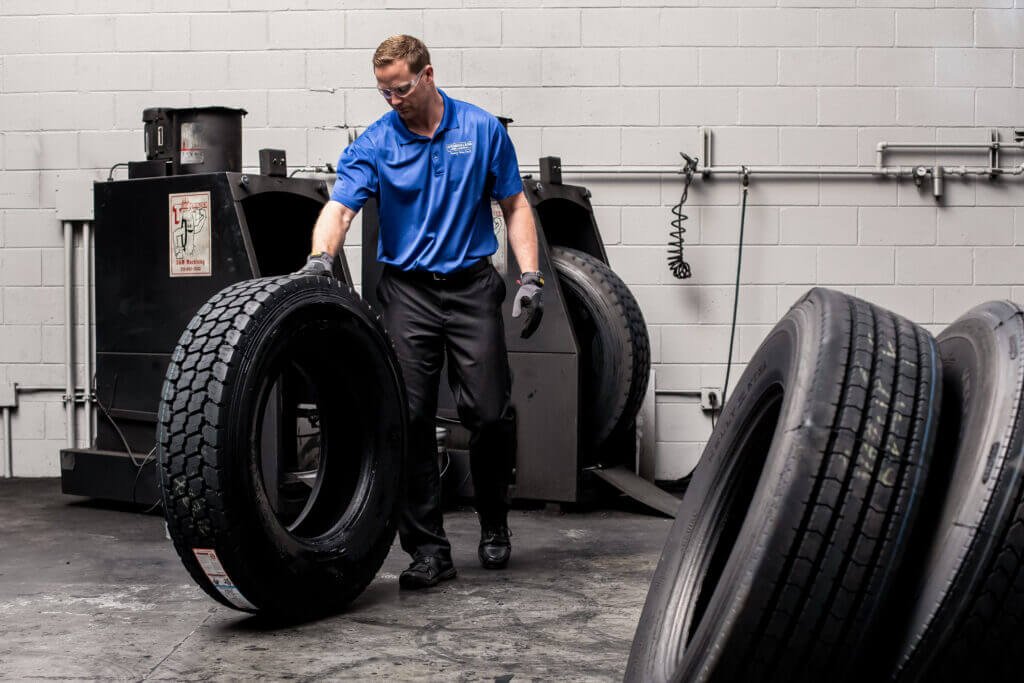Are you looking for help deciding whether retread tires suit your car? The answer is definitely yes. It would help if you got them from reputable retreads, especially those affiliated with organizations like the Retread Tire Association. These partnerships show a commitment to making great copies.
This article will tell you everything you need to know about retreading tires, such as their popularity, what works, and what doesn’t.
What Does Retreading a Tire Mean?
The way the insurance industry has acted shows that they are safe. Insurance companies would raise rates if rebuilt tires were less secure than new ones. However, the number of accidents involving new and used tires is still the same, so insurance companies handle both types of tires the same.

Retreading gives new life to tires that are too damaged to fix. Taking off the worn-out rim and tread rubber from a tire tube without damaging its structure is what it means. After this, the case goes through several steps to get a new tire and wheel rubber. After getting a unique tread pattern set on a tire, it must be cured so the new rubber can stick to the old case and make the tire whole again. This process makes old tires last longer and reduces waste by letting them be used in different ways again.
The process of Retreading Tires
There are several methods on tire retreading, but the two most common ones are hot and cold. An increasing 60–70% of the population uses hot tire retreading. Let’s see how well these tire retreading methods work:
1. Cold Tire Retreading Technique
Even though it’s called cold retreading, this method actually involves using heat (temperatures over 100 degrees Celsius) to achieve the desired outcomes. Molds are very pricey, and this method doesn’t need them. Tire liners fill in the gaps between the tires during the retreading process.
2. Hot Tire Retreading Technique
In this process, tires are heated in a mold to about 150 degrees Celsius before they’re placed on the rubber surface. This step ensures that the tires adopt the proper geometry. By vulcanizing tires at temperatures exceeding 150 degrees Celsius, hot retreading aims to alter the shape and threads of tires.
The tread and rim rubber of an old tire that is still structurally sound is replaced during the hot tire retreading process. The case is subjected to an internal drying procedure after removal and reinstallation from the vehicle. This procedure allows the new rubber to adhere to the old casing, fixing it. The tread pattern of the new tire is different from that of the previous tire.
Pros and Cons of Tire Retreading: Are Recapped Tires Safe?
To find the answer to recap tires are safe, let’s observe some pros and cons of recap tires for vehicles.
Pros
- Cost Savings: One of the many benefits of retreading tires is that it may save money. People who buy used tires may save up to 40% compared to people who buy new ones. This makes them a good choice for people on a budget.
- Off Roading Performance: If your tires have treads, especially ones made for off-roading like our Kedge Grip tires, they might do well on rough ground.
- Environmental Benefits: Remolded tires are better for the environment because they use only a quarter of the oil of new tires. Because they are made in the United States, they also help local businesses and keep jobs close to home.
- Technological Advancements: New technologies used to make tires have made retreading processes much better. Better rubber materials are used to make tire covers these days, so the quality is higher all around.
- Industry Compliance: If you get your tires repaired by a reputable company, you can be sure they will meet all safety rules and laws during the fitting process.
Cons
- Not Ideal for Personal Vehicles: Do Not Retread If the Original Tires Were Made of Thinner Materials. Refrain from retreading the tires if made of thinner materials. Rereading business cars might have more advantages.
- Safety Concerns: Some people don’t believe that retreaded tires are safe because they have problems staying stable when going fast. In some situations, grip in the rain, durability, and stopping power could be harmed.
- Insurance Considerations: Your insurance provider might not cover retreaded tires because they may not consider them safe for private vehicles. Insurance companies wouldn’t recommend them because they might make it harder to stop and grip in wet conditions, and they can become unstable at high speeds.
How Long Do Retreads Tires Last?
Many important factors affect how long retreaded tires last. The most important part is the retreading process. Retreaded tires that last longer are usually made by reputable companies that use cutting-edge technology and follow industry rules. Also, the condition of the original tire casing is critical because well-maintained tire casings can be rebuilt many times, which extends their life.
Longevity is also affected by proper use and regular maintenance. For example, following speed limits, not overloading, and having the right amount of pressure are all examples of appropriate use and routine maintenance. The type of use and the road surface also significantly affect how long tires last, so tires made for some instances may last longer. Other factors that affect how long rebuilt tires last are:
- Bad driving conditions.
- The name of the maker.
- The right way to place the tires.
- The design of the tread pattern.
Are Retread Tires as Good as New?
Several things can change how well-retreaded tires work compared to new tires. When made by reputable companies using cutting-edge methods and high-quality materials, retreaded tires may work just as well as new ones. To meet industry standards, they are often tested to ensure they are safe and reliable.
It is important to keep in mind that not all rebuilt tires are the same. The manufacturer’s reputation, the original tire shell’s condition, and the retreading process’s quality are all critical factors. For industrial cars, retreaded tires are a better value for money and better for the environment.

People have different ideas about personal vehicles. Some drivers prefer new tires because they believe they’re safer than retreaded ones. When deciding if retreaded tires are suitable for a particular use, one must look at the name of the company that makes them, as well as their driving habits and tastes. Retreaded tires are valuable and inexpensive if made and kept in good shape.
How Many Times Can a Tire Be Retreaded?
The rate of time the tire is retreaded depends on the tire casing’s structural soundness. Tires that are in good condition and with minor damage can be retreaded multiple times. Think about the tires on business vehicles. Tire casings can be replaced, which makes them last longer.
Trusted retread manufacturers say their products should only be used for a certain number of retreading rounds. Depending on how they were made and how they are used, tire casings can last three retreads.

How many times a tire can be retread depends on how often the case is checked, how well it is maintained, and how closely it is used according to the rules. Follow the manufacturer’s instructions and industry standards to ensure your tires stay safe and work well for a long time.
How Many Cheaper are Retread Tires?
You may save some money when you buy old tires instead of new ones, but they are usually much cheaper. Sometimes, the price gap could be 20% to 50%, or even more. That’s why retreaded tires are a good choice for businesses and people who want to save money on tires, especially in industries like industrial transportation, where tires are used all the time and get worn down quickly.
Always remember that the actual saves rely on the tire type, the retreading method, and the brand. Trusted retread manufacturers usually make top-notch retreaded tires, which are an affordable and eco-friendly alternative for getting new tires.
Conclusion
Overall, the safety of retread tires depends on several factors, including the quality of the retreading process, the condition of the original case, and the strictness with which the rules are followed. Reputable makers give you confidence by following the rules of their business. Making sure safety is better through regular checks, maintenance, and following the rules. When figuring out how safe replacement tires are, you must make choices based on your driving needs and the manufacturer’s guidelines.
Related Posts:
- How Thick are Tire Sidewalls
- Why Do Tires Lose Air in Cold Weather
- How Much Does Big O Tires Charge to Install Tires
- How Much Does Les Schwab Charge to Mount Tires

![Are Retread Tires Safe: Why Should You Buy? [Explained] Are Retread Tires Safe](https://carglitch.com/wp-content/uploads/2024/03/are-retread-tires-safe-768x432.jpg)